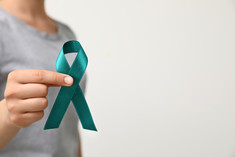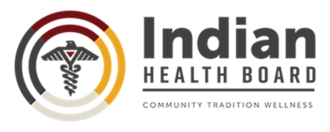
Announcements
New! Sage Stories page
Sage is pleased to announce a new page on our website. The Sage Stories page is a place where those who have been impacted by breast or cervical cancer can share their experiences. We believe that personal narratives are powerful and help to connect us in the fight against breast and cervical cancers. Sage is actively working to gather more testimonials, especially stories where Sage has made life-saving differences. Those who are interested in sharing their personal stories can contact Amanda Ubongen for more details.
amanda.ubongen@state.mn.us
|
Sage Fax Number Details
In 2020, Sage obtained a new fax number (1-877-495-7545). During this time, we have been transitioning away from using the old fax number (651-201-5601). Starting in 2022, the old fax number will officially become obsolete and will no longer work. Please be sure to fax correspondence using 1-877-495-7545. Thank you.
Sage Funding Cycle Ending
The CDC is Sage’s major funder and provides a grant based upon a competitive application process every 5-years. The current five-year cycle will end on 6/29/22. We need your help to close out the current cycle and to secure funding for the next 5-years. Here is what you can do:
For Current Cycle
- Prepare to end screening by 6/29/22 unless notified by Sage of a different date.
- Submit patient forms, claims, and any needed EOB’s as soon as possible after the date of service to ensure Sage can pay them with grant funds prior to the funding cycle’s close.
- Watch closely for Sage notices so you don’t miss potential changes in screening or submission deadlines.
For Next Cycle
- If asked, please help Sage by writing a letter of support to be included with Sage’s competitive application.
- Be willing to supply clinic data if requested to help demonstrate screening need and/or capacity for Sage’s work.
- Share expertise and experience to help Sage meet its goals to advance health equity and reduce breast and cervical cancer in Minnesota.
Questions or comments can be sent to Sage at health.sage@state.mn.us

Cervical Cancer Awareness Month
In 2021, nearly 14,500 women in the United States will be diagnosed with cervical cancer and 4,290 will die from it. January has been designated Cervical Cancer Awareness Month by Congress to raise awareness about the role regular screenings play in cervical health.
Most cervical cancers occur among women who have not been adequately screened.1 At one time, cervical cancer was a leading cause of death for women until the widespread implementation of cervical cancer screening evolved following the introduction of the Pap smear. Cervical cancer has a defined, avoidable etiology, and is curable if caught early. Over 90% of cervical cancers are caused by the human papillomavirus (HPV) which is the most common sexually transmitted infection in the US. Though there have been great advances in understanding cervical cancer, screenings (Pap smears and HPV tests), and HPV vaccinations which have all led to significant decreases in cervical cancer cases and deaths, there is still more work to be done.
According to the United States Preventive Services Task Force, current cervical cancer screening recommendations for average risk individuals ages 21 to 65 include a Pap smear every three years, or those ages 30 to 65 can receive primary HPV testing alone or co-testing (Pap smear and HPV test) every 5-years. Sage Screening Programs pay for routine cervical cancer screening for individuals 21 to 64 years of age that have an income ≤ 250% FPL and are un- or underinsured.
Sage is committed to advancing health equity and focusing its recruitment and outreach activities on populations in most need of screening services. The program is guided in its efforts by Minnesota’s cervical cancer disparities. Between 2014-2018, Minnesota’s American Indian women were twice as likely as the state’s non-Hispanic White women to be diagnosed with cervical cancer, and Minnesota’s Asian women were more than three times likely to die from the disease compared to non-Hispanic White women. Furthermore, Asian women have the lowest cervical cancer screening rate in the state.
Sage is applying its health equity lens to January’s Cervical Cancer Awareness Month campaign by focusing efforts on recruiting both American Indian and Asian American women to cervical cancer screening services. Sage’s month-long media campaign will include the following:
- A Native Roots Radio AM950 campaign that will include a symposium tailored towards Minnesota’s American Indian women that will involve both Sage and partners.
- Outreach efforts in collaboration with Minnesota’s Lao Center to distribute materials and communications that prompt Asian community members to get screened for cervical cancer.
- A story in The Circle (a local American Indian newspaper) about an American Indian woman who found her cancer through Sage;
- Newspaper ads in both American Indian and Asian newspapers;
- Mail targeting American Indian and Asian communities in MN that promotes cervical screening;
- Social media done in partnership with MDH’s Adolescent and Adult Immunization Unit that includes messages promoting both cervical cancer screening and HPV vaccines; and,
- Boosted social media posts aimed towards Asian and American Indian Facebook users.
Beyond Sage's efforts to promote Cervical Cancer Awareness Month, there are exciting initiatives being led by other cancer champions. One partnering organization, the American Indian Cancer Foundation (AICAF), is continuing Turquoise Thursday, a national cervical cancer awareness campaign geared towards Native women. There are a variety of activities involved in Turquoise Thursday, one in which they encourage women to make a pledge to be screened. Sage wants to thank our partners for all the lifesaving work they do that makes significant differences in Minnesota’s communities.
- Melnikow J, Henderson JT, Burda BU, et al. Screening for Cervical Cancer With High-Risk Human Papillomavirus Testing: A Systematic Evidence Review for the US Preventive Services Task Force. Evidence Synthesis No. 158. Rockville, MD: Agency for Healthcare Research and Quality; 2018. AHRQ publication 15-05224-EF-1.
|

Sage Stories: Pamela Weems
When Pamela Weems was first diagnosed with breast cancer, she knew she wanted to reach out to other women. Pamela started Think Pink, an event celebrating breast cancer awareness and survivorship.
Pamela's full story can be read on the Sage website.
Pamela’s Story
|

Sage Survey Results
The Sage Program recently sent out a survey to our Sage network to learn more from you, our partners. We asked you question about how Sage works at your clinic, and requested feedback on how we can better partner with you in our mission to deliver breast and cervical cancer screening services. Thanks to those who’ve responded! For those who haven’t responded, we’d still appreciate your feedback. You can respond via the following link: Sage Partner Survey
From an initial review of survey responses, we have seen some common themes and learned a lot about what impacts your work with the Sage program.
Perceived reasons why women may not get breast/cervical cancer screening:
- Time: women struggle to find time to attend clinic appointments.
- Tied for second are motivation (which can include fear/uncertainty about what might be found or fear of the actual test) and cost of screening services
Barrier’s clinics encounter in using the Sage program:
- Staff turnover and maintaining familiarity with the Sage Program
- Paperwork challenges
- Limited knowledge of what services and which individuals are covered by Sage
- Limited knowledge about diagnostic and treatment resources
- Process challenges (e.g., connecting with outside imaging providers)
- Lack of colorectal resources
How can the connection between the clinics and Sage can be strengthened?
- More communication and training with Sage staff
- Additional resources (e.g., Sage Enrollment form in different languages)
- More promotion of the Sage Program to the public
- Colorectal cancer screening services
We hear you and are planning to start a webinar series in the next couple months! Again, if you haven’t completed the survey, please do so and we look forward to connecting more in the future!
|

Indian Health Board: A One Stop Shop for Culturally Competent and Comprehensive Health Care for Women
Indian Health Board of Minneapolis (IHB) is a community health clinic, located near downtown Minneapolis, at 1315 E 24th St, Minneapolis, Minnesota. The clinic provides: primary medical care, dental services, mental and behavioral health, and health and wellness education. It specializes in promoting health care in an urban setting, accessible to American Indians and Alaska Natives residing in the Midwest region.
In March of 2021, IHB became a SagePlus Clinic. SagePlus is an add-on heart health screening program for women enrolled in the Sage breast and cervical cancer screening program. SagePlus helps keep women in Minnesota healthy by addressing their risks for cardiovascular disease. Program components include risk factor screenings, education on risk factors, and ongoing support for lifestyle changes.
During the risk reduction counseling appointment, a clinic provider determines a patient’s readiness to make healthy changes and discusses options for lifestyle change programs or interventions called health behavior support services. These include services such as nutrition education, diabetes education, wellness classes, smoking cessation, self-monitoring of blood pressure and health coaching. One thing that IHB prides itself on is the comprehensive services it provides in-house -- kind of a “one stop shop” for health care. Most of the SagePlus services IHB offers are located in-house.
Since March, IHB has enrolled 15 women into the SagePlus Program. This is remarkable given COVID pandemic challenges. Three of these 15 women completed the program and the other 12 are in the process of doing so. Women have 18 months to complete the program and can enroll again if eligible. Most women who are screened and enrolled in the SagePlus Program at IHB are referred during mobile mammography screening events held at the clinic.
IHB has a strong commitment to the SagePlus Program and looks forward to continuing to screen and enroll women into the Program so that women can reach their highest level of health and wellness. This vision is shared by both IHB and SagePlus which makes this a perfect partnership for the SagePlus Program.
|
 |
|